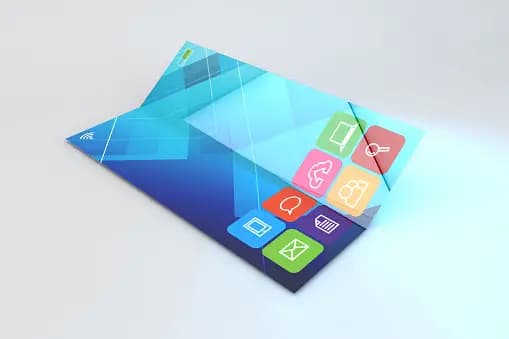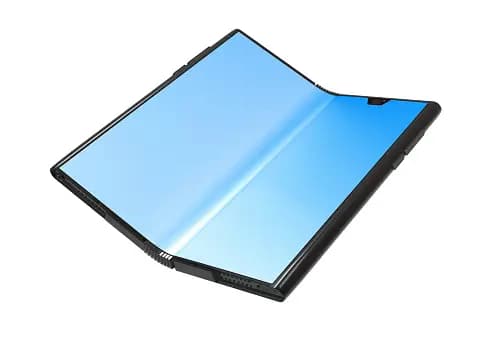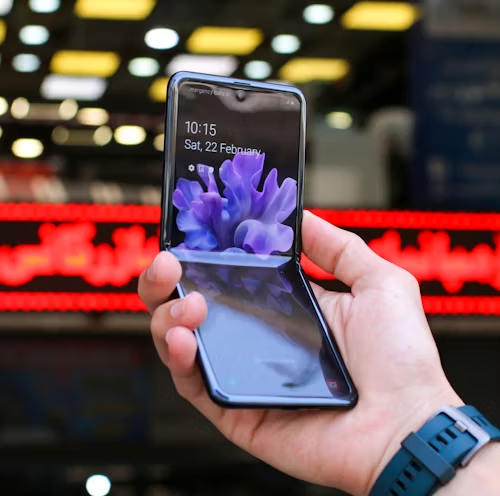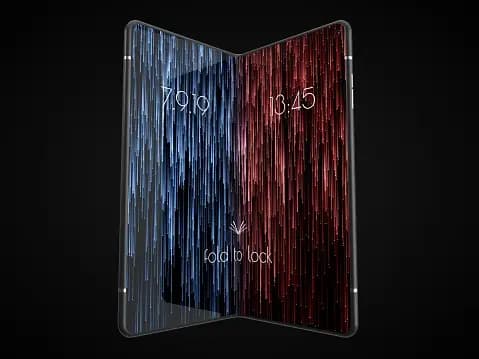
Folding vs. Unfolding Phones: The Future of Mobile Form Factors
Folding vs. Unfolding Phones: The Future of Mobile Form Factors
Introduction
The world of mobile phones has seen a remarkable evolution over the years, from the bulky and limited devices of the past to the sleek and powerful smartphones of today. One of the latest trends in this evolution is the emergence of folding phones, which offer a unique blend of flexibility and innovation. In this blog post, we will explore the landscape of folding vs. unfolding phones and their implications for the future of mobile form factors.
Evolution of Mobile Phones
Mobile phones have come a long way since the days of brick-sized devices with limited functionalities. The advent of smartphones revolutionized the industry by introducing touchscreens, advanced cameras, and app ecosystems. However, the traditional candy bar design has dominated the market for years, leading to a demand for more innovative form factors.

Rise of Folding Phones
Folding phones, with their ability to expand screen real estate and provide a compact form factor, have captured the imagination of tech enthusiasts and consumers alike. Companies like Samsung, Huawei, and Motorola have led the way in bringing folding phones to the mainstream, signaling a shift toward a new era of mobile device design.

Importance of Form Factor in Mobile Devices
The form factor of a mobile device plays a crucial role in determining its usability, portability, and overall user experience. Whether it's for entertainment, work, or communication, the way a phone looks and feels can significantly impact how we interact with technology on a daily basis.
The Case for Folding Phones
Flexibility and Portability
Folding phones offer users the flexibility to switch between a compact form for one-handed use and an expanded screen for multitasking or media consumption. This adaptability makes folding phones a versatile option for users who value convenience and versatility in their devices.

Multitasking and Productivity
With larger screens and advanced multitasking capabilities, folding phones open up new possibilities for productivity on the go. Whether it's running multiple apps simultaneously or seamlessly transitioning between tasks, folding phones cater to users who rely on their devices for work and efficiency.
Enhanced User Experience
The unique design of folding phones provides a more immersive and engaging user experience compared to traditional smartphones. From gaming to video streaming, the increased screen real estate and innovative form factor enhance the way we interact with content on our devices.
The Case for Unfolding Phones
Larger Screens and a Better Viewing Experience
Unfolding phones offer users the convenience of a large screen without the need for folding mechanisms. This design provides a seamless viewing experience for multimedia content, gaming, and web browsing, catering to users who prioritize screen size and clarity.

Improved Durability and Longevity
Unlike folding phones, unfolding phones do not rely on complex hinge mechanisms that may be prone to wear and tear over time. This durability factor makes unfolding phones a more reliable option for users who seek longevity and resilience in their devices.
Compatibility with Existing Apps and Accessories
Unfolding phones maintain compatibility with existing apps, accessories, and peripherals without requiring specific adaptations or modifications. This ensures a seamless transition for users who rely on a wide range of software and hardware solutions in their daily lives.
Challenges of Folding Phones
Technical Limitations and Design Constraints
One of the main challenges facing folding phones is the technical limitations and design constraints associated with foldable displays. Issues such as screen durability, hinge mechanisms, and software optimization present hurdles that manufacturers must overcome to deliver a seamless user experience.
Price and Accessibility
Folding phones often come with premium price tags due to their innovative technology and complex manufacturing processes. This pricing factor can limit the accessibility of folding phones to a niche market segment, posing a barrier to widespread adoption by mainstream consumers.
User Acceptance and Adoption
Despite their innovative design and unique features, folding phones may face resistance from users who are accustomed to traditional smartphone form factors. The shift towards folding phones requires a mindset change and a willingness to embrace new technologies, which may not be instantaneous for all consumers.
The Future of Mobile Form Factors
Innovation and Technological Advancements
As technology continues to evolve, we can expect further innovation in mobile form factors, with folding and unfolding phones paving the way for new design possibilities. Advancements in materials, displays, and manufacturing techniques will drive the future of mobile devices toward more versatile and adaptable solutions.

Market Trends and Consumer Preferences
Market trends and consumer preferences will play a significant role in shaping the future of mobile form factors. Factors such as screen size, portability, and functionality will influence the direction of mobile device design, reflecting the needs and desires of a diverse consumer base.
Impact on the Industry and Ecosystem
The introduction of folding and unfolding phones will impact the entire mobile industry ecosystem, from manufacturers and developers to retailers and consumers. This shift in form factors will drive competition, innovation, and collaboration among key players in the market, ultimately shaping the trajectory of mobile technology.
Future Outlook
When considering the future prospects of Folding vs. Unfolding Phones: The Evolution of Mobile Form Factors, it's crucial to explore various essential factors that will influence the direction of these advancements.

Technological Advancements:
Both folding and unfolding phones will see continued technological advancements. Foldable phone technology will likely become more robust, with improvements in durability, hinge mechanisms, and screen materials. Unfolding phones may explore new form factors and innovative ways to utilize flexible display technology.
Market Adoption and Competition:
The market for folding and unfolding phones will witness increased adoption as technology matures and prices become more competitive. As more manufacturers enter the fray, competition will drive innovation and lead to a wider array of options for consumers.
Design Evolution:
Smartphone design will undergo a significant evolution, moving beyond traditional rectangular slabs to more versatile and adaptable form factors. This evolution will be driven by the need for larger screens in compact devices, enhanced multitasking capabilities, and improved user experiences.
User Experience:
The user experience of folding and unfolding phones will continue to improve, offering seamless transitions between different modes and configurations. Enhanced software optimization and app support will further enrich the user experience, making these devices more intuitive and user-friendly.
Use Cases and Applications:
The versatility of folding and unfolding phones will unlock new use cases and applications across various industries. From productivity tools and gaming experiences to immersive multimedia consumption and creative content creation, these devices will cater to diverse user needs and preferences.
Ecosystem Integration:
Integration with other devices and ecosystems will be a key focus for manufacturers. Seamless connectivity with wearables, smart home devices, and automotive systems will enhance the overall user experience and drive greater adoption of folding and unfolding phones.
Sustainability and Environmental Impact:
Manufacturers will increasingly prioritize sustainability and reduce the environmental impact of their products. This may involve using recyclable materials, implementing eco-friendly manufacturing processes, and extending the lifespan of devices through modular design and repairability.
Regulatory and Ethical Considerations:
As folding and unfolding phones become more prevalent, regulators and policymakers will need to address various ethical and privacy concerns. This includes issues related to data security, e-waste management, and the impact of technology on social interactions and mental health.
Cultural and Societal Implications:
The widespread adoption of folding and unfolding phones will have broader cultural and societal implications. These devices will influence how people communicate, work, and interact with technology, reshaping social norms and behaviors in profound ways.
In summary, the future of Folding vs. Unfolding Phones: The Future of Mobile Form Factors promises an exciting journey of innovation, transformation, and adaptation. With ongoing advancements in technology, design, and user experience, these devices will continue to push the boundaries of what's possible in the realm of mobile technology.
Conclusion
In conclusion, the debate between folding and unfolding phones represents a balance between innovation and user preferences. While folding phones offer flexibility and versatility, unfolding phones provide durability and familiarity. Both form factors have their unique advantages and challenges, suggesting a future where coexistence and competition drive continued evolution in mobile devices.
FAQs
Are Folding Phones the Future of Mobile Devices?
Folding phones represent a significant step towards the future of mobile devices, offering innovative form factors and enhanced user experiences that cater to a wide range of consumer needs.
What Are the Main Differences Between Folding and Unfolding Phones?
The main differences between folding and unfolding phones lie in their design, functionality, and user experience. Folding phones offer portability and flexibility while unfolding phones provide larger screens and durability.
How Will Mobile Form Factors Impact the Way We Use Technology?
Mobile form factors will impact the way we use technology by influencing how we interact with devices, consume content, and engage with digital experiences daily. The choice between folding and unfolding phones will shape the future of mobile device design and usage.